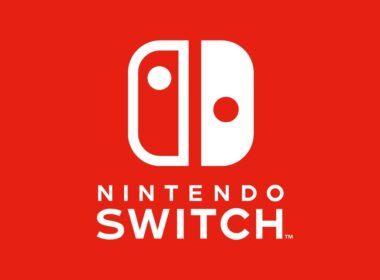There can be no denying the sheer level of excitement surrounding the launch of the Nintendo 3DS, now just under two weeks away from release. Set to revolutionise the gaming scene in a way that only Nintendo know how, the handheld system was officially unveiled at E3 2010 and has since garnered a continual momentum of interest with many clamouring to secure their pre-orders. Yet, who can blame them?
With a reputation for providing consumers with innovative experiences, the company has taken note of the phenomenal worldwide success of the Nintendo DS and expanded it through taking evolutionary steps with their latest 3DS, whilst retaining the dual-screen formula that has already proved so popular. That is, of course, the family of handheld systems incorporating the Nintendo DS, DS Lite, DSi and DSi XL, that have sold over 144 million units globally.
Whilst you will more than likely be aware that the main attraction of the 3DS is the ability to experience stereoscopic 3D without the need for glasses, Nintendo have been sure to include plenty of additional functionality that is also worthy of consuming all of your gaming attention – so, having been incredibly fortunate to have had the opportunity to play around with the latest handheld system for a few weeks now, let’s knuckle down to guiding you through what the system has to offer.
After initially opening the retail box, you’ll immediately find yourself tasked with delving past a rather thick layer of instruction manuals before receiving the ultimate reward of finally discovering the Nintendo 3DS sat snuggly in its protective soft foam packaging. Charging Cradle and AC Adaptor happily included next to it, providing all the immediate necessities.
Packaging swiftly removed from the scene, you’ll instantly be taken aback by just how slick the the handheld itself looks, yet it is still more than instantly familiar to the dedicated Nintendo DS audience that the company has built over the past six years. There is perhaps much direct similarity to be observed with the DSi model, yet the 3DS is still able to pave its own identity through a number of key adjustments. Now featuring a three-tone colour scheme, of which consumers will be able to choose between Aqua Blue and Cosmo Black models at launch, the handheld system continues Nintendo’s heritage of attractive, reliable hardware.
You’ll instantly notice a number of significant alterations that surpass its predecessor. For instance the new Circle Pad, with its comfortable concave design, is particularly welcome and seems well suited to the control set-up offered by the system. As well as offering new possibilities to developers, its inclusion also means that the usual D-Pad is now positioned differently, now to be found below the Circle Pad. Whilst its lifecycle has only just begun, such a move perhaps indicates that Nintendo are aiming for the the majority of 3DS software will now use the Circle Pad by default, although we shall have to wait and see.
That isn’t to say that the D-Pad will become redundant, still remaining to be a more than necessary component to enjoy the backwards compatibility of the Nintendo DS software library, but as with anything when transitioning from old to new you’ll have to get used to the new control layout.
Similarities continue, with the 3DS also featuring the same four action buttons that have been used across all Nintendo DS models – A, B, X and Y – accompanied by the duo of shoulder buttons, L and R. They feel far more secure and robust than the previous DSi iteration of the handheld, perfect for when you’re bashing the hell out of them in Super Street Fighter IV 3D Edition.
Further additions include the HOME button, located at the base of the touch screen alongside the START and SELECT buttons, which acts as a fundamental navigational component for the new menu system on the handheld. The Power button now also appears to the right of this trio.
Of more significance is the new 3D Depth Slider that sits to the right side of the top 5:3 widescreen, with two + shaped speakers also appearing on either side. Slightly loose in design, the slider is a necessity allowing users to easily switch between 3D and 2D visual display outputs dependant on what games they are playing.
I’m sure that fans of the Nintendo DS will be eager to know how well backwards compatibility works, and there are no real issues here. Any DS software title that you play will automatically be enlarged to match the visual output of both the dual screens, yet Nintendo have also seen fit to allow you to be able to opt to play such games in their native resolution. Whenever you booth a Nintendo DS title from the Home menu, if you press and hold both START and SELECT the game will load in its native resolution. However, whilst such functionality is welcome, it makes output on both screens particularly small and you’ll probably end up preferring the stretched resolution even if it isn’t quite as visually crisp and sharp.
Working your way around the external area of the device, you’ll now find an On/Off Wireless switch, volume control, 3.5mm headphone socket at the centre of the base, and the Stylus is now housed in its new position next to the game cart slot. Nintendo have also introduced an evolution to the Stylus itself by incorporating a telescopic design. You can extend it to whichever length you require, perfect for both large and small hands alike!
An SD Card slot, now on the left of the handheld, also returns, with Nintendo seeing fit to include a 2GB SD Card with the system – a noticeable commitment to their desire to really get the StreetPass and SpotPass functionality underway. Whilst I’m sure fans will immediately upgrade to a larger storage size when such content kicks off, it is nice to see that Nintendo have included initial storage for you to use.
Nintendo have also decided against grouping the variety of LED lights that act as alerts for various functions of the handheld. Both Power (Blue) and Charging (Orange) lights are at the base of the system, to the right of the headphone socket, whereas the Wireless (Yellow) and StreetPass/ SpotPass (Green) are located to the right of the handheld.
Those that haven’t kept up to date with the Nintendo 3DS’ functionality, StreetPass effectively allows you to communicate various information in regards to the software that you have played, such as Ghost Data in Ridge Racer 3D or collectible figurines that can battle each other in Super Street Fighter IV 3D Edition. SpotPass is somewhat similar, but allows your 3DS to communicate with Wi-Fi hotspots as you walk past them (including your own Wi-Fi connection at home), providing you with free content, notifications and more. For cautious parents, however, Parental Controls will allow you to limit access to each feature if you think it unsuitable for your children.
In my view, such interconnectivity is perhaps the most exciting factor in regards to the new handheld. Turning your system on to discover how many players you have passed, what new content has surfaced and more. Such activity is even encouraged through an Activity Log that records how many steps you have taken that day – awarding Game Coins for your efforts.
Finally, I must mention the trio of cameras – two on the exterior, and one on the interior. Some may ponder why there are two lenses on the outside of the system, yet this is to allow the user to take 3D Photos and down the line, according to Reggie Fils-Aime at GDC ’11, 3D Videos. Such 3D capabilities are also used for both the Augmented Reality games included with the system, as well as pre-installed software such as Face Raiders.
Whilst some may accuse bias, it is hard not to remain impressed by the steps that Nintendo has taken with the 3DS. Criticised for their online integration, both StreetPass and SpotPass are revolutionary steps for the company to take, and users are now only required to register one Friend Code per player meaning that multiplayer connectivity with other players has never been simpler on a Nintendo system.
Whilst there has been much scaremongering and worry in regards to the glasses-free 3D experience, having used the system for a couple of weeks now I’ve certainly found that the eye strain and headaches that I had initially have become a thing of the past – don’t worry!
So, that’s the hardware covered! I’ll be going into more depth in regards to the pre-installed software, incorporating the Mii Maker, Augmented Reality Cards, Face Raiders and 3D Photos each day this week.
Hands-on Preview: Nintendo 3DS Hardware





